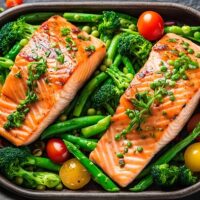Holiday Prep Made Easy Part 1
November marks the beginning of the holiday season — that cozy, colorful stretch between gratitude and celebration. What’s meant to be joyful can sometimes be stressful, with juggling shopping lists, guests, decorating, menus, and endless errands. Here’s the happy news. A little preparation now can help you glide through the upcoming holidays with more calm, connection, and confidence.
Start With a Vision
Before diving into lists, take a breath and picture what you truly want this season to feel like. Warm and cozy at home? Parties with family, friends, and laughter? More mindful and less hurried? Having a vision helps guide your plans so you can say yes to what matters and no to what drains you. 
Take Inventory and Plan Ahead
Check your pantry and freezer before the holiday rush. Toss expired spices and stock up on staples like flour, baking powder, nuts, and olive oil—everything you need to make and bake your favorites. Map out your menus for gatherings and casual meals alike — and think about what can be made ahead and frozen. Soups, casseroles, and cookie dough freeze beautifully, saving you time later.
Simplify Gift Giving
Now’s the time to organize your gift list. Consider homemade or memory-making gifts — something to eat, wear, read, or do. These thoughtful touches often mean more than the latest gadget and can be planned or made early.
Create Calm at Home
A quick declutter of key spaces before the décor goes up can make your home feel peaceful and welcoming. Add cozy touches like a soft throw or twinkle lights that set a festive mood without adding chaos.
Schedule Mini-Resets 
Even the best-laid plans can leave you feeling scattered. That’s where mini-resets come in — one or two days between events to reset your body and mind. Think hydration, lean proteins, veggies, light movement, and early bedtime. These quick pauses help you feel refreshed, keep your energy steady, and prevent a “holiday hangover” that comes from doing too much too fast.
Progress, Not Perfection
The holidays don’t have to be picture-perfect to be meaningful. Real life is nothing like a Hallmark movie. A little forethought — and a few mini-resets along the way — can make all the difference between feeling frazzled and fully present.
Be sure to check out next week’s blog post for more tips on keeping the holidays merry, peaceful, and bright.
Much love,
Health Coach Carol
“Thankfulness creates gratitude which generates contentment that causes peace.” – Todd Stocker








